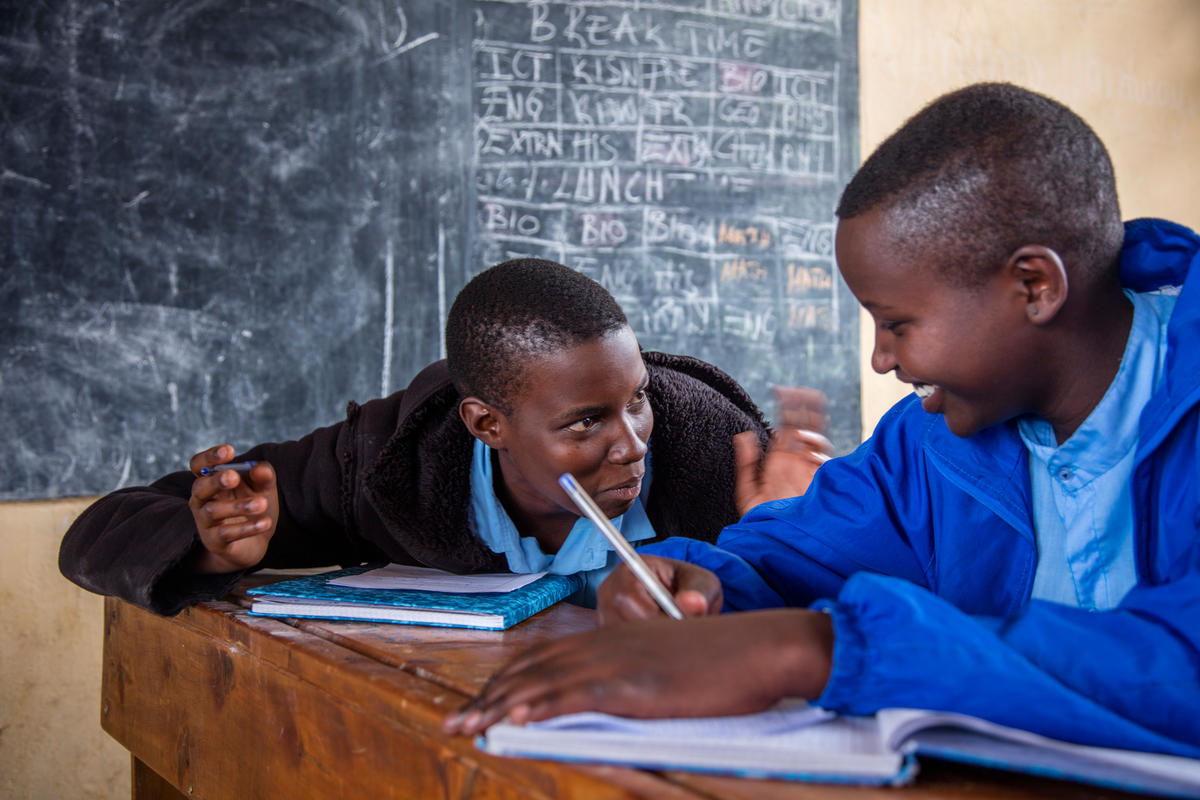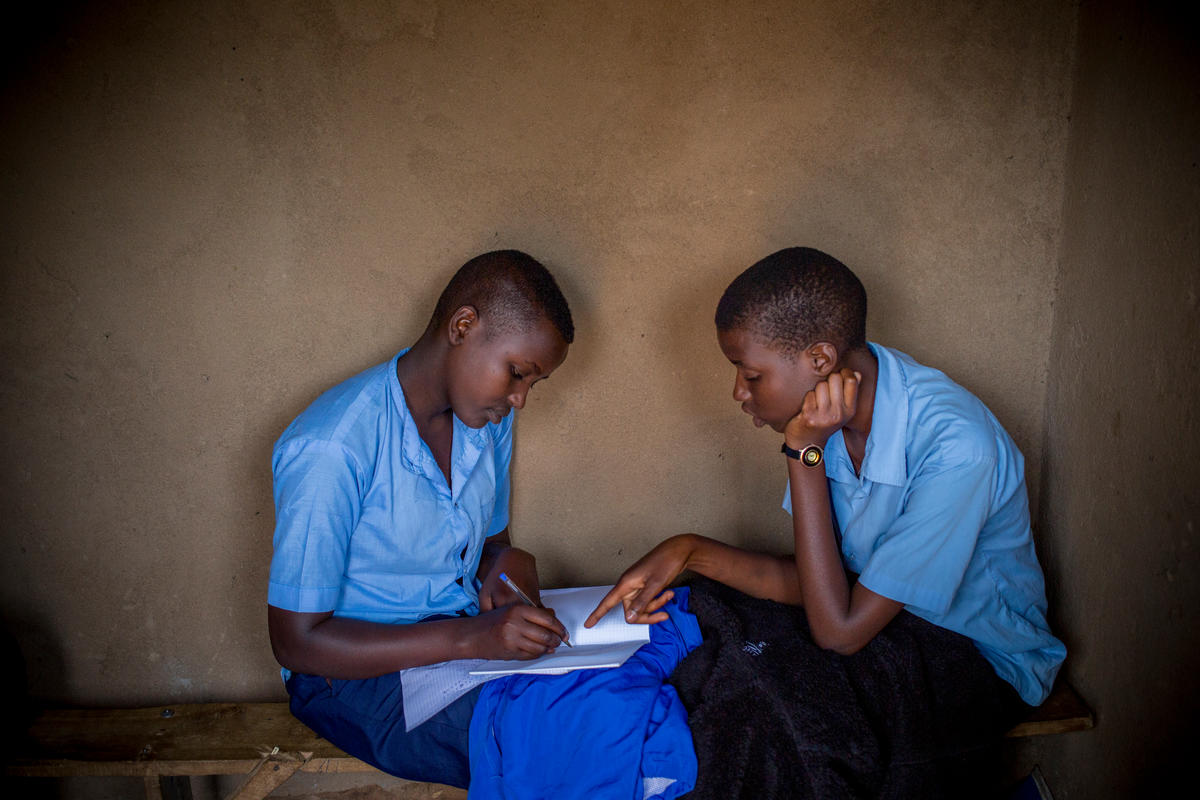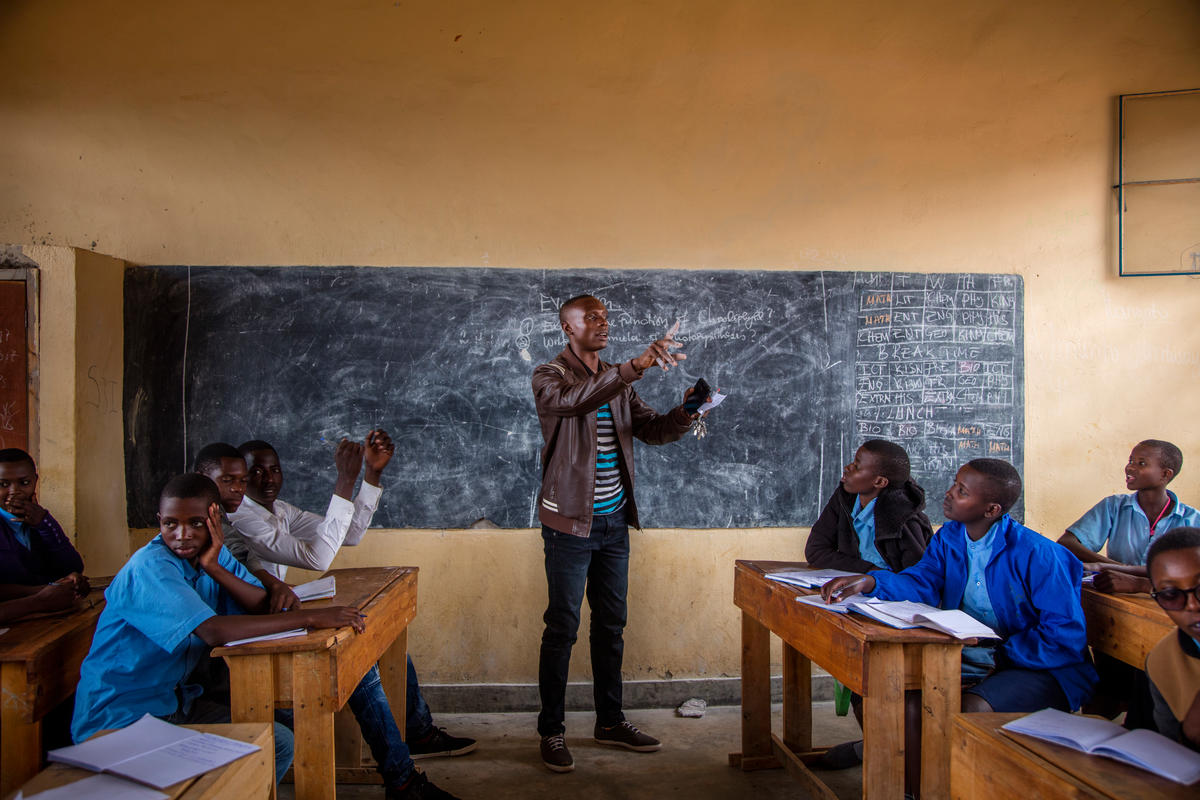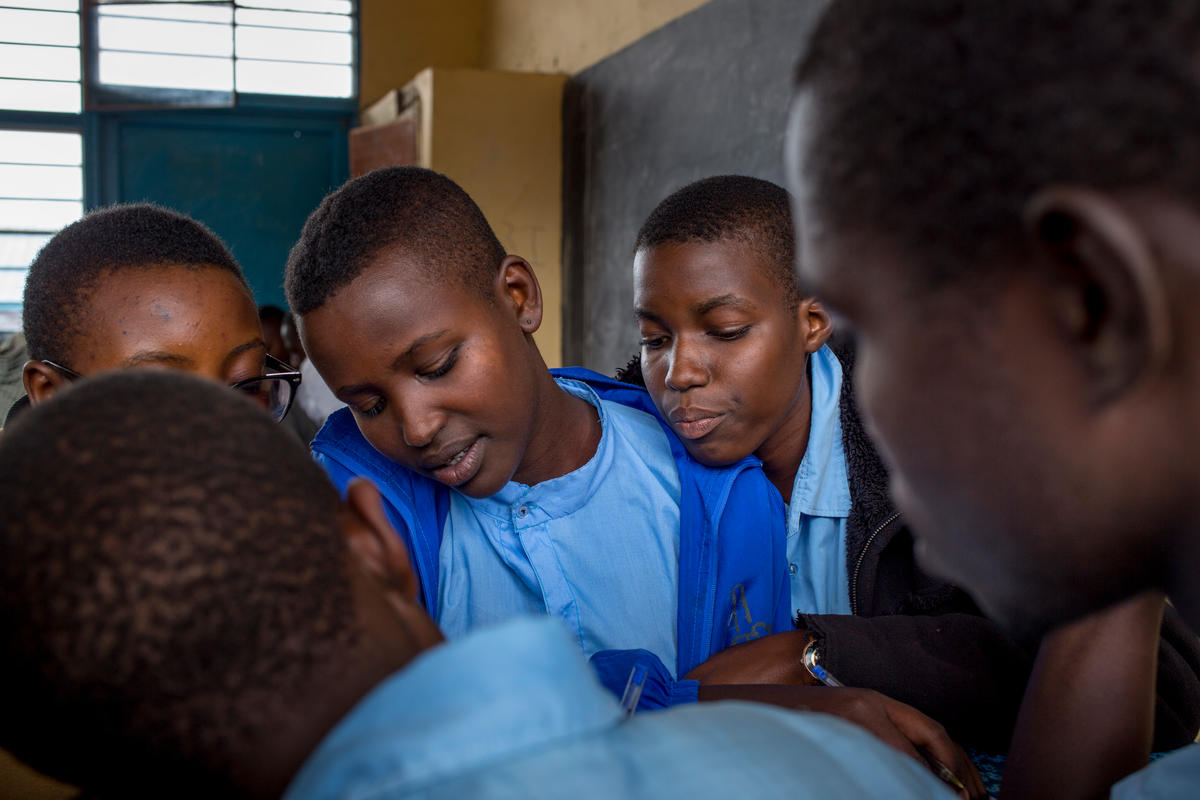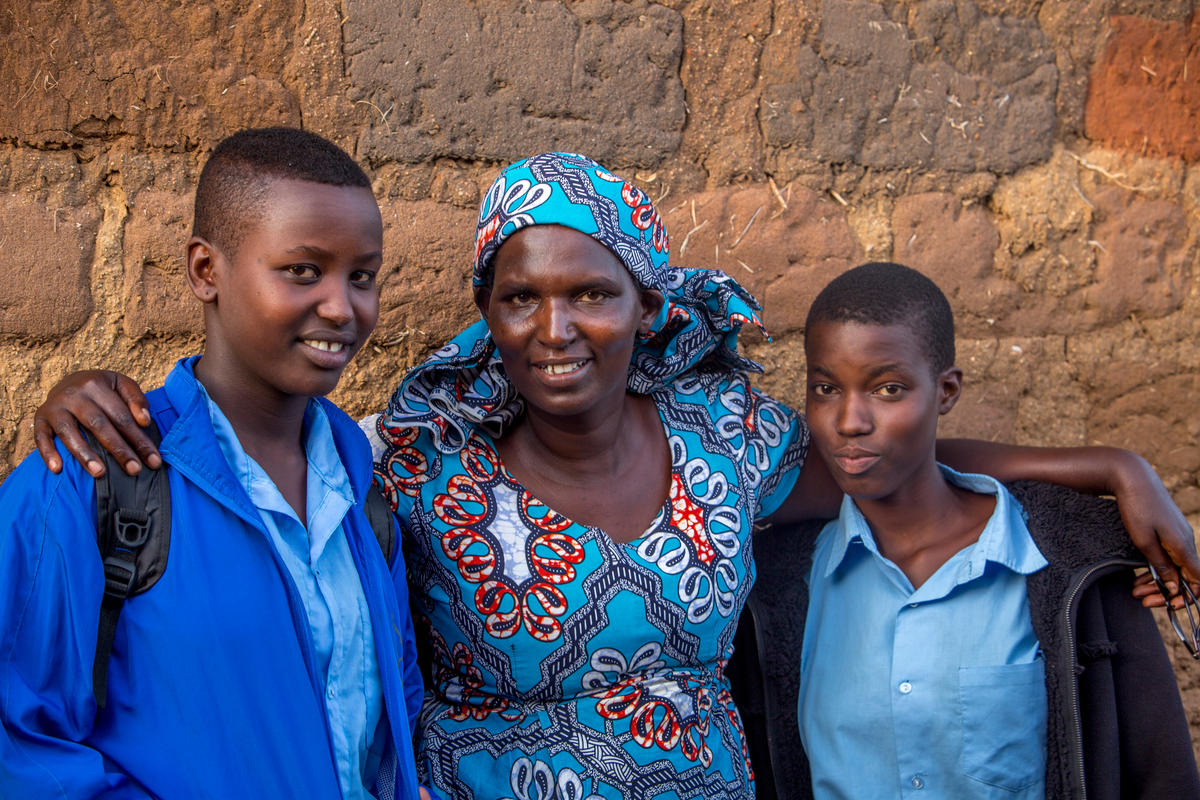Learning together forges friendships between Rwandan and Burundian students

Learning together forges friendships between Rwandan and Burundian students
As morning assembly ends in Paysannat L School, on the edge of Mahama refugee camp in eastern Rwanda, students hurriedly disperse to their classes. Among them are Bellaca and Anethe who, holding hands and laughing, are clearly the best of friends.
For Bellaca Irikungoma, a 16-year-old refugee from Burundi, going to secondary school was a chance for a return to normality after fleeing fighting more than a year ago. She was not expecting to find much more than basic services in the camp, still less a fully operational school for more than 21,000 students.
“When I’m in school, I really like the fact that I’m attending classes and I get to see my best friend as well,” said Bellaca as she looked over her shoulder at Anethe, who sits right behind her.
Having the school right on her doorstep has also been a blessing for Anethe Cyuzuzo, 15, a Rwandan who lives outside the refugee camp. “If this school didn’t exist here, I would have to travel a long way for my secondary schooling,” she explained.
The two girls found themselves sitting next to each other on Bellaca's first day. Their fears that their different nationalities and backgrounds would hinder their friendship soon proved to be unfounded. “She is a good friend,” Bellaca said of Anethe. “Before we became really close, she used to tell me to come and study with her. She would explain the lessons to me.”
Paysannat L started out in 1997 as a small primary school, but expanded in 2015 in order to accommodate thousands of Burundian children who joined the exodus after renewed violence broke out. Now, it has 230 classrooms and 300 teaching staff. The school caters not only to the refugee population, who make up the bulk of the student body, but also to local Rwandans. Primary and secondary education is free to all.
UNHCR worked with the Rwandan government to integrate refugees into the national education system by placing refugee and local students in the same school and teaching them in English, Rwanda’s official language of instruction – unlike in Burundi, where classes are taught mainly in French.
“At the school … when they provide school materials to the refugees, they also give some to us, they don’t discriminate,” Anethe said. “This is one reason we feel [the refugee pupils] are real partners.”
"I am very happy because now I have a good Burundian friend."
Monica Tse Candido, UNHCR’s Protection Officer in Kirehe District, agreed. “When refugees and the local students study together, it brings about a greater sense of community and cohesion among the two communities,” she said. “It doesn’t matter whether the children are from Rwanda or Burundi because they are all treated as one.”
This enabled the friendship between Bellaca and Anethe to flourish. The girls walk each other home after school, do homework together and help each other with housework.
There are other ways in which the school has enabled the girls to study. There is a counselling room for girls – particularly helpful for teenagers, who can get free sanitary pads, take showers and change clothes if necessary. “The room is very useful to us especially when we have our period,” said Bellaca. “Before, we used to go back to the camp and then we would miss class.”
When the Burundians first arrived, Anethe was merely curious to meet one. “Since I met Bellaca,” she added: “I am very happy because now I have a good Burundian friend.”
This story is featured in "Her Turn", a new report from UNHCR that reveals that refugee girls at secondary level are only half as likely to enrol in school as their male peers, even though girls make up half of the school-age refugee population.


